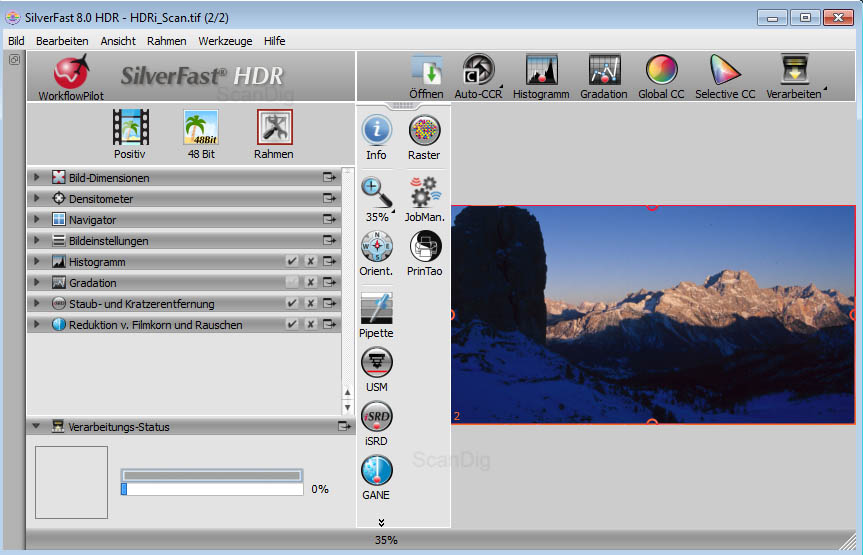

(but today's cameras might be better than yesterday's scanners) the Nikon Super Coolscan scanners are still some of the best film scanners around, and they're available on eBay for very good prices, but Nikon doesn't repair them anymore (I asked) so don't expect to use them for a long time. SilverFast is not cheap, so it depends on the number of photos you need to scan as to whether the purchase is justified. and you'd try to use a lense that allowed you to capture the whole frame at f5.6 or better i.e., a macro lense? You would need a backlight with extremely balanced light across the film, and it would need to be the right temperature.
#SILVERFAST HDR RAW FILE FULL#
None of the material I have is worth the effort and cost of considering a full archivist system.

I'm failry sure that improving the lighting would help the colour data somewhat but whether it would be enough, for the originals I am working with, to make a worthwhile difference I am not sure. I have yet to decide whether to invest in a more suitable lens and attempt to optimise the lighting for the exposure. The results were partly compromised by the choice of lenses I had available for the test (focus limitations) but the colour degradation of some of the slides was just beyond the capabilities of the camera/C1 combination's ability to uncover quick and viable results - even allowing for some probably rather dodgy chemistry and colour balances in the old film. I recently looked into direct digital scanning of slides (as a starter) to a digital camera. I assume that an experienced archivist might have the knowledge, experience, tools and skills to work around those problems and it may be possible to adjust something at the point of scanning that makes the scan look bad but provides data for more successful post processing but it's not something I have pursued.

If for any reason the processing was slightly off and/or the dyes have changed over time the quality available from the scan can be very compromised and potentially there is nothing to work with in the scanned data to rebalance the results. As long as it keeps working, nothing seems to beat it except it’s speed is lacking.Sometimes they work well, sometimes they are very challenging, I think for the reasons you mention. That result was actually the reason for me to put the digital-camera-scanning setup back in the storage and keep up with scanning with the Scan Elite 5400. The conversions that NLP makes of them look to be very nice… clearly better color than the exact same negative scanned with a Sony A7m2 with NLP, so the Minolta scanner delivers clearly better scans this way. It took some time and trial&error to find the correct Maker/Model info to write. dng files and load them into Lightroom, and here they are picked up as Vuescan with the correct NLP profile (since the Minolta Scan elite 5400 is supported in NLP with Vuescan DNGs). With ‘exiftool’ (command-line tool) I write the correct Maker / Model info into the. What I do - it is a bit technical so I don’t know if it’s for everyone - is to load the tif files from Silverfast into Vuescan (Vuescan ‘scan from raw’) and have Vuescan save them as raw dng. I have been scanning Silverfast ‘HDR tif’ files (48bit, linear-space (no gamma), tiff, scanned as positive, scanner-gain set to be as close to clipping as possible).
#SILVERFAST HDR RAW FILE SOFTWARE#
I have been scanning for quite some while with a Reflecta Crystalscan 7200 with Vuescan, but saving as raw tiff.Īnd I have been scanning for some time now with a Minolta Elite 5400 (mk1) for which I have to use Silverfast 6 (or the Minolta software), no other software seems to deal well with the scanner.


 0 kommentar(er)
0 kommentar(er)
